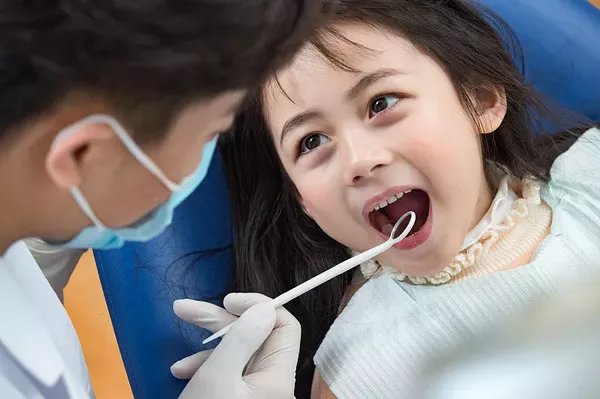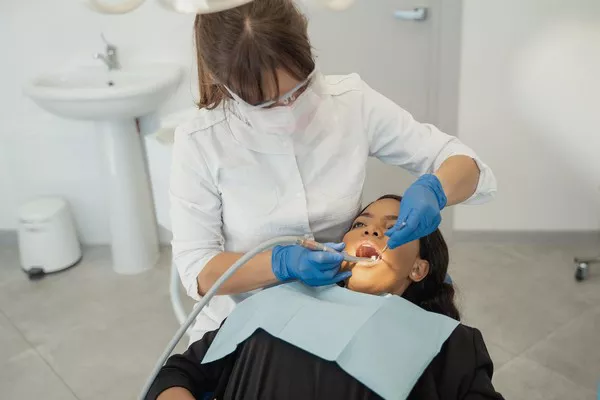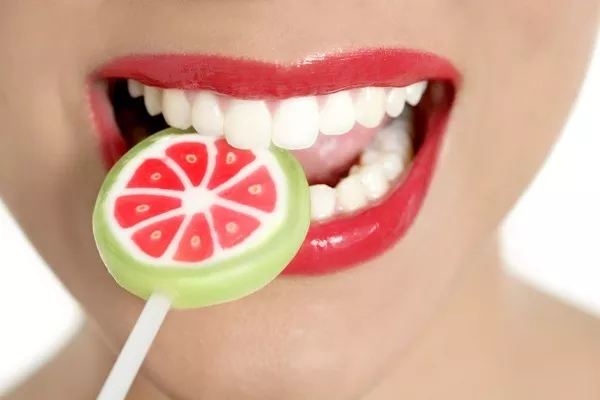Dental fillings are a common dental procedure aimed at restoring a tooth damaged by decay or trauma. While the procedure itself is relatively straightforward, proper aftercare is crucial for ensuring the longevity and effectiveness of the filling, as well as minimizing discomfort and complications. In this comprehensive guide, we’ll delve into essential aftercare practices to follow after getting a dental filling.
Setting Time
After the dental filling procedure, it’s essential to allow adequate time for the filling material to set and harden fully. The setting time can vary depending on the type of filling material used by your dentist. Here’s an overview of common filling materials and their respective setting times:
- Composite Fillings: Composite fillings are a popular choice due to their natural appearance and versatility. They typically harden quickly when exposed to a special curing light used by the dentist. However, it’s advisable to avoid biting on hard objects or eating sticky foods for at least a few hours after the procedure to allow the filling to fully set.
- Amalgam Fillings: Amalgam fillings, also known as silver fillings, contain a mixture of metals and usually take longer to set compared to composite fillings. It’s recommended to avoid eating or drinking for at least one to two hours after getting an amalgam filling to give it sufficient time to harden.
- Glass Ionomer Fillings: Glass ionomer fillings are often used for small fillings or in areas with low bite pressure. They typically set relatively quickly but may continue to harden over the next few hours. Patients should refrain from eating or drinking for at least an hour after the procedure to allow the filling to set properly.
Regardless of the type of filling used, patients should be extra cautious during the initial setting period to avoid disrupting the filling and compromising its integrity.
Pain Management
It’s normal to experience some level of discomfort or sensitivity after getting a dental filling, especially if the tooth was previously damaged or decayed. To manage post-operative pain and sensitivity, consider the following tips:
- Over-the-Counter Pain Medication: Over-the-counter pain relievers such as ibuprofen or acetaminophen can help alleviate any discomfort following the procedure. Follow the recommended dosage instructions provided on the medication packaging, and consult your dentist if you have any concerns or if the pain persists.
- Duration of Sensitivity: It’s common to experience mild sensitivity to hot, cold, or sweet foods and beverages for a few days after getting a filling.
However, if the sensitivity persists or worsens over time, it’s essential to contact your dentist for further evaluation, as it could indicate an issue with the filling or underlying tooth.
Eating and Drinking
After getting a dental filling, it’s crucial to be mindful of what you eat and drink to avoid damaging the filling or causing discomfort. Here are some tips to follow:
- Avoid Eating Until Anesthetic Wears Off: If you received local anesthesia during the procedure, wait until the numbness wears off before attempting to eat or drink anything. Trying to chew food while still numb can increase the risk of accidentally biting your cheek, tongue, or lips.
- Choose Soft Foods: Stick to soft or semi-soft foods in the hours following the filling procedure to minimize stress on the newly restored tooth. Opt for items such as yogurt, mashed potatoes, soup, scrambled eggs, or smoothies until you feel comfortable eating regular foods again.
- Avoid Hard, Chewy, or Sticky Foods: Hard, chewy, or sticky foods can place excessive pressure on the filling and may cause it to dislodge or crack. Avoid items such as nuts, hard candies, popcorn, gum, and tough meats until your dentist gives you the green light to resume your normal diet.
Temperature Sensitivity
After getting a dental filling, it’s common to experience heightened sensitivity to hot and cold foods and beverages. To minimize discomfort, consider the following tips:
- Start with Lukewarm Foods: In the days following the filling procedure, opt for lukewarm or room temperature foods and beverages to avoid triggering sensitivity. Gradually reintroduce hot or cold items into your diet as your tolerance improves.
- Use a Straw: If you’re sensitive to cold beverages, using a straw can help minimize direct contact with the filled tooth and reduce discomfort.
- Limit Extreme Temperatures: While it’s essential to maintain good oral hygiene habits, avoid exposing the filled tooth to extreme temperatures immediately after eating or drinking. Rinse your mouth with lukewarm water instead of hot or cold water to prevent exacerbating sensitivity.
Oral Hygiene
Proper oral hygiene is essential for maintaining the health of your teeth and gums, especially after getting a dental filling.
Here are some tips to care for your new filling:
- Brushing: Continue to brush your teeth twice a day using a soft-bristled toothbrush and fluoride toothpaste. Be gentle around the filled tooth to avoid irritating the surrounding gum tissue.
- Flossing: Flossing is crucial for removing plaque and food particles from between your teeth and along the gumline. Be careful when flossing around the filled tooth to avoid dislodging the filling or causing discomfort.
- Using Fluoride Toothpaste: Fluoride helps strengthen enamel and protect against tooth decay. Choose a fluoride toothpaste recommended by your dentist and use it as directed to maintain the health of your teeth and prevent future cavities.
Follow-Up Care
After getting a dental filling, it’s essential to schedule a follow-up appointment with your dentist to ensure that the filling is functioning correctly and to address any concerns you may have. During the follow-up visit, your dentist will examine the filled tooth and make any necessary adjustments to ensure a proper fit and bite.
If you experience any issues with the filling, such as persistent pain, sensitivity, or signs of damage, don’t hesitate to contact your dentist for further evaluation and treatment. Regular check-ups and cleanings are also essential for maintaining the health of your teeth and detecting any potential issues early on.
Long-Term Care
To prolong the lifespan of your dental filling and maintain optimal oral health, consider the following long-term care tips:
- Practice Good Oral Hygiene: Continue to brush and floss your teeth regularly to prevent plaque buildup and reduce the risk of tooth decay and gum disease.
- Limit Sugary Foods and Beverages: Minimize your consumption of sugary snacks and drinks, as they can contribute to tooth decay and compromise the integrity of the filling.
- Attend Regular Dental Check-Ups: Schedule routine dental exams and cleanings every six months or as recommended by your dentist. These appointments allow your dentist to monitor the condition of your filling and address any concerns before they escalate.
Avoiding Hard Foods
In the days following the dental filling procedure, it’s advisable to avoid consuming hard, chewy, or sticky foods that could potentially damage the filling or cause discomfort. Instead, opt for softer foods and beverages that are gentle on the teeth and gums.
By following these aftercare guidelines and adopting a proactive approach to oral hygiene, you can ensure the success and longevity of your dental filling while maintaining optimal oral health for years to come. Remember to consult your dentist if you have any questions or concerns about your filling or oral care routine.
FAQs About Dental Fillings
1. What not to do after getting a filling?
After getting a dental filling, it’s essential to avoid certain activities to ensure the success and longevity of the restoration. Here’s what not to do after getting a filling:
- Avoid eating hard, chewy, or sticky foods: These types of foods can place excessive pressure on the filling and may cause it to dislodge or crack.
- Refrain from biting on hard objects: Chewing on hard objects such as pens, pencils, or ice cubes can damage the filling and compromise its integrity.
- Limit consumption of very hot or very cold foods and beverages: Extreme temperatures can trigger sensitivity and discomfort in the filled tooth, especially in the days following the procedure.
- Don’t skip oral hygiene: Continue to brush and floss your teeth regularly, but be gentle around the filled tooth to avoid irritating the surrounding gum tissue.
- Avoid consuming alcohol or smoking: These habits can interfere with the healing process and may increase the risk of complications.
2. What to do after getting a tooth filling?
After getting a tooth filling, it’s essential to follow proper aftercare instructions to promote healing and minimize discomfort. Here’s what to do after getting a tooth filling:
- Wait until the anesthetic wears off: If you received local anesthesia during the procedure, wait until the numbness wears off before attempting to eat or drink anything.
- Choose soft foods: Stick to soft or semi-soft foods in the hours following the filling procedure to minimize stress on the newly restored tooth.
- Take over-the-counter pain medication if needed: If you experience any discomfort or sensitivity after the procedure, you can take over-the-counter pain relievers such as ibuprofen or acetaminophen as directed.
- Practice good oral hygiene: Continue to brush and floss your teeth regularly using a soft-bristled toothbrush and fluoride toothpaste to maintain oral health.
- Attend follow-up appointments: Schedule a follow-up appointment with your dentist to ensure that the filling is functioning correctly and to address any concerns you may have.
3. Can I eat after tooth filling?
It’s generally advisable to wait until the anesthetic wears off before attempting to eat or drink anything after getting a tooth filling. Once the numbness subsides, you can start with soft or semi-soft foods and gradually reintroduce your regular diet as tolerated. However, it’s essential to avoid hard, chewy, or sticky foods that could potentially damage the filling or cause discomfort.
4. How long does it take for a tooth filling to heal?
The healing time for a tooth filling can vary depending on factors such as the type of filling material used, the size of the filling, and individual healing capabilities. In general, most people experience some degree of sensitivity or discomfort for a few days after getting a filling. However, if the sensitivity persists or worsens over time, it’s essential to contact your dentist for further evaluation.
With proper care and attention to oral hygiene, the filled tooth should heal within a week or two, and any discomfort should gradually diminish. If you have any concerns about the healing process or the integrity of the filling, don’t hesitate to reach out to your dentist for guidance and support.






























